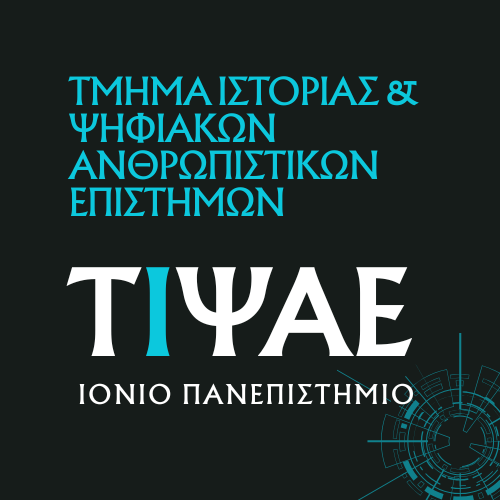ANCIENT HISTORY: CLASSICAL GREECE
Teaching Staff: Strolonga Polyxeni
Course Code: ΙΑΕ102
Course Type: Compulsory
Course Level: Undergraduate
Course Language: Greek
Delivery method: Lectures
Semester: 4th
ECTS: 5
Curricula: Curriculum in History up to 2024-25, Curriculum in History and Digital Humanities from 2025
We attempt an analytical overview of the political and social history of the period from the Persian Wars to the Battle of Leuctra. Some of the themes that feature quite strongly include: Athenian ‘imperialism’; the foreign policy of Sparta; the pursuit of hegemony vs. the striving for autonomy; the pursuit and preconditions of the Common Peace (‘koine eirene’); developments in strategy and war tactics.
The course is intended to equip the students with a solid knowledge of fundamental issues of the classical period including the formation and development of political systems and institutions, the social and political developments from the institutional reforms of Cleisthenes and the efflorescence of Athenian Democracy to the pursuit of hegemony, the Peloponnesian War and its consequences during the first decades of the 4th c. The course offers the opportunity for an assessment of ancient sources and a critical examination of historical interpretation. The students will be encouraged to think freely, creatively and inductively.
Week 1: New institutions in Athens: Kleisthenes’ reforms - Constitutional developments during the 5th century B.C.
Week 2: The political constitution and the social organization of Sparta- The foreign policy of Sparta.
Week 3: The Persian Wars.
Week 4: Athens after the Persian Wars- The “Delian League”.
Week 5: The growth of Athenian Power – The Athenian Hegemony.
Week 6: The “Periclean policy”- The causes of the Peloponnesian War.
Week 7: The Peloponnesian War: Resources and Strategy.
Week 8: The first part of the Peloponnesian War (431 – 421).
Week 9: The Peloponnesian War: Athens and the West.
Week 10: The collapse of the Athenian Hegemony – The consequences of the Peloponnesian War.
Week 11: Introduction to the 4th c. B.C.: The first post-war years - The “Common peace”- Developments in warfare.
Week 12: The hegemony of Sparta and its collapse.
Week 13: The Second Athenian League and Athens’ bid for supremacy.
- B. Bury & Russell Meiggs, Ιστορία της αρχαίας Ελλάδας. Cl. Mossé - Α. Schnapp - Gourbeillon, Επίτομη Ιστορία της Αρχαίας Ελλάδας (2.000-31 π. Χ.). W. Schuller, Ιστορία της Αρχαίας Ελλάδας. M. Finley, Οικονομία και κοινωνία στην Αρχαία Ελλάδα. Δ. Ι. Κυρτάτας & Σ. Ι. Ράγκος, Η ελληνική αρχαιότητα: πόλεμος - πολιτική – πολιτισμός. J. de Romilly, Ο Θουκυδίδης και ο αθηναϊκός ιμπεριαλισμός. S. Hornblower, Ο Ελληνικός κόσμος 479-323 π. Χ. Cl. Mossé, Οι Θεσμοί στην κλασσική Ελλάδα. R. Meiggs, The Athenian Empire. P. Garnsey - C. R. Whittaker (eds.), Imperialism in the Ancient World. L. J. Samons (ed.), Athenian Democracy & Imperialism. A. Powell, Athens and Sparta: Constructing Greek Political and Social History from 478 BC. P. Brulé et al., Le monde grec aux temps classiques. G. Cawkwell, The Greek Wars. P. J. Rhodes, A History of the Classical Greek World: 478-323 BC. R. Meiggs - D. M. Lewis, A Selection of Greek Historical Inscriptions to the end of the fifth century BC. P. J. Rhodes - R. Osborne, Greek Historical Inscriptions: 404-323 BC. Σ. Κουμανούδης - Α. Ματθαίου, Αρχαίες ελληνικές επιγραφές.
The course is lecture-based, but it also involves critical discussion with the students and an analysis of audiovisual material and written sources. Additional material (maps, literary texts, inscriptions) will be distributed in each lecture.
Written examination.
Back



